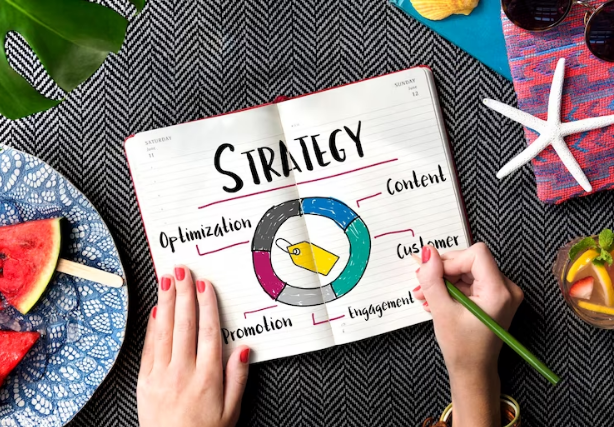
What Is Content In Digital Marketing?
In the context of digital marketing, “content” refers to any material or information created and shared online to engage and attract a target audience. Content is a fundamental component of digital marketing strategies, as it allows businesses and individuals to connect with their audience, provide value, and build relationships. Content can come in various formats, such as:
-
Blogs and Articles: Written pieces of content that provide valuable information, insights, or solutions to specific topics or questions.
-
Social Media Posts: Short and engaging content shared on social media platforms like Facebook, Twitter, Instagram, and LinkedIn.
-
Videos: Visual content that can include product demos, tutorials, interviews, storytelling, or any other form of visual communication.
-
Infographics: Visual representations of data, information, or concepts that make complex ideas easier to understand.
-
Podcasts: Audio content available for download or streaming, usually focused on specific topics or discussions.
-
E-books: Longer-form written content, often in a downloadable format, providing in-depth information or resources on a particular subject.
-
Email Newsletters: Regular emails sent to subscribers with updates, promotions, or valuable content.
-
Webinars: Online seminars or workshops that offer educational content and interactive discussions.
-
Case Studies: Detailed examinations of specific situations or projects, highlighting successes and lessons learned.
-
User-Generated Content (UGC): Content created by customers or users of a product or service, showcasing their experiences.
The purpose of content in digital marketing is to attract, engage, and inform the target audience. Valuable and relevant content can help establish a brand’s authority, drive website traffic, improve search engine rankings, and ultimately convert leads into customers.
To create effective content in digital marketing, it’s essential to know your target audience and understand their interests, preferences, and pain points. Tailoring content to meet the specific needs of your audience increases the likelihood of engagement and conversion. Additionally, consistency in content creation and distribution across various online channels helps build a strong online presence and brand reputation.
What is Content Strategy

Content strategy is a comprehensive plan that guides the creation, distribution, and management of content to achieve specific business or communication goals. It is a strategic approach to content development that ensures the content aligns with the organization’s objectives and effectively reaches and engages its target audience.
The process of content strategy involves several key steps:
-
Defining Objectives: Clearly articulate the goals and objectives of the content strategy. These objectives could be to increase brand awareness, drive website traffic, generate leads, improve customer engagement, or support other marketing efforts.
-
Understanding the Audience: Conduct research to identify and understand the target audience’s needs, preferences, behaviors, and pain points. This helps in tailoring content to resonate with the intended audience.
-
Content Audit: Evaluate existing content assets to identify gaps, strengths, weaknesses, and opportunities for improvement. This audit helps in determining what content should be created, updated, or repurposed.
-
Content Creation: Develop a plan for generating new content that aligns with the identified objectives and meets the needs of the target audience. This can include articles, blog posts, videos, infographics, social media posts, and more.
-
Content Governance: Establish guidelines and processes for creating, approving, and publishing content. This ensures consistency and quality across all content assets.
-
Content Distribution and Promotion: Determine the channels and platforms through which the content will be distributed. This may include the organization’s website, social media channels, email newsletters, guest posting, and other relevant channels.
-
Performance Measurement and Analysis: Set up metrics and analytics to measure the performance of the content strategy. This involves tracking key performance indicators (KPIs) like website traffic, conversion rates, engagement metrics, and more. Analyzing these metrics helps in refining the strategy over time and making data-driven decisions.
-
Iterative Improvement: Content strategy is an ongoing process. Based on the analysis of performance metrics and feedback, the strategy should be refined and adjusted to continuously improve its effectiveness.
A successful content strategy involves collaboration between various stakeholders, such as content creators, marketers, designers, SEO specialists, and data analysts, to ensure that the content produced aligns with the overall business objectives and resonates with the intended audience.
